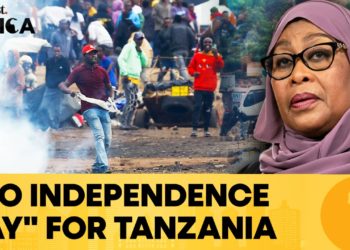The Kenyan government has rolled out a new university funding model that aims to better address students’ financial needs based on family income. Announced by President Dr. William Samoei Ruto on August 14, 2024, the model introduces a tiered system to allocate scholarships and loans to first-year students.
The new funding model categorizes students into five income bands, each with specific levels of government scholarship and loan support. This initiative is part of the broader Student-Centred Model and is set to allocate KES 25.3 billion in scholarships and loans for the 2024/25 academic year. The revised structure aims to ensure that financial aid is more accurately aligned with the economic circumstances of students and their families.
Band 1: For families with a monthly income up to KES 5,995, the government scholarship will cover 70% of the total cost, while a loan will cover 25%, providing a combined support of 95%. Families will contribute 5%, with an additional upkeep loan of KES 60,000.
Band 2: Families with monthly incomes up to KES 23,670 will receive 60% of the total cost covered by a government scholarship and 30% by a loan, amounting to 90% of the support. The family’s contribution will be 10%, with an upkeep loan of KES 55,000.
Band 3: For families earning up to KES 70,000 per month, the government will cover 50% of the total cost through scholarships, and 30% will be covered by a loan, providing 80% of the support. The family will contribute 20%, and the upkeep loan will be KES 50,000.
Band 4: Families with a monthly income up to KES 120,000 will receive 40% of the total cost covered by a government scholarship and 30% by a loan, totaling 70% of the support. Families will contribute 30% of the cost.
Band 5: In this category, families earning more than KES 120,000 per month will be required to contribute 30% of the total fees. The government will cover 30% through scholarships, and an additional 30% will be provided as a loan, leaving the family to cover the remaining 40% of the fees.
| Income Band | Government Scholarship (%) | Loan (%) | Total Support (%) | Family Contribution (%) | Upkeep Loan (KES) |
|---|---|---|---|---|---|
| Band 1 | 70% | 25% | 95% | 5% | 60,000 |
| Band 2 | 60% | 30% | 90% | 10% | 55,000 |
| Band 3 | 50% | 30% | 80% | 20% | 50,000 |
| Band 4 | 40% | 30% | 70% | 30% | – |
| Band 5 | 30% | 30% | 60% | 40% | – |
The Ministry of Education has directed universities to issue updated admission letters reflecting these new fee structures by August 19, 2024. This initiative follows President Ruto’s directive and is aimed at making higher education more affordable and accessible.
Julius Ogamba, Cabinet Secretary for the Ministry of Education, commented on the new model: “Our goal is to ensure that financial support is tailored to the needs of each student. By aligning assistance with family income levels, we strive to promote fairness and provide meaningful support to students across different economic backgrounds.”
The new model ensures that first-year students receive funding that corresponds with their family’s financial situation, providing clarity and support. The Ministry has also opened the application portal for additional students who may have missed the initial application period, ensuring that all eligible students have the opportunity to receive financial aid.


















